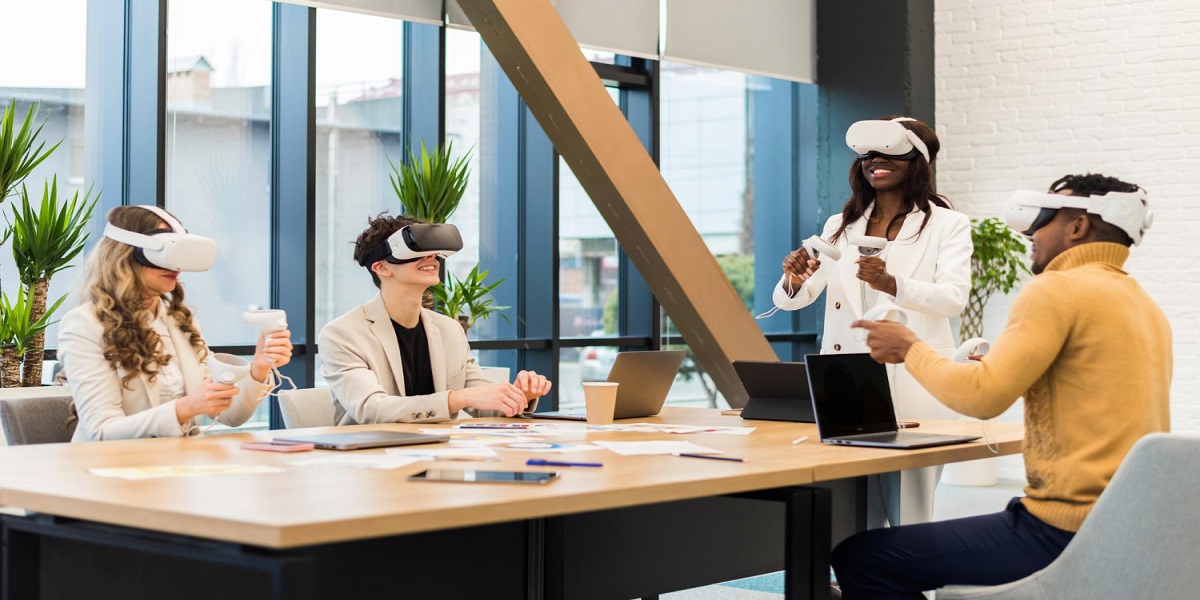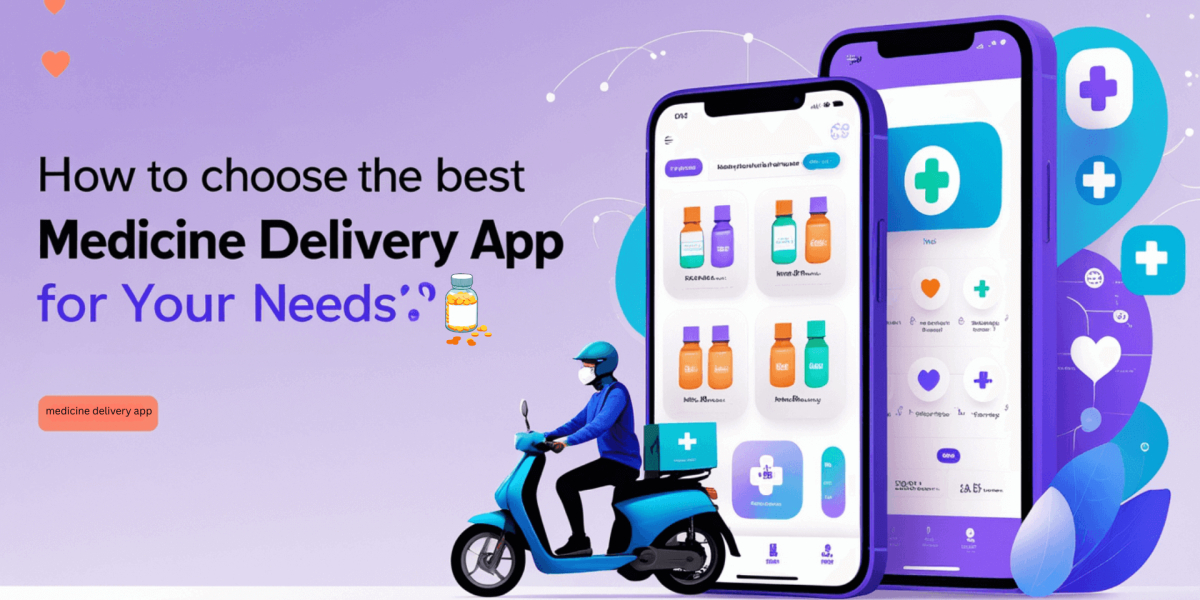How To Use Virtual Reality In Corporate Communication
- By Esda Ril
- 05-07-2023
- Virtual Reality

Virtual reality, commonly known as VR, is a powerful and emerging interactive technology that has proven to be a useful tool in various fields, from video games, virtual training, and interactive experiences to corporate communications. Over the past few years, the popularity and prevalence of VR has increased, with the technology being implemented in new and innovative use cases. Many companies worldwide have already started using VR headsets to enhance and innovate corporate communication. VR shows immense promise in improving how companies can communicate with their employees.
The rising popularity of VR is due to the significant advancements in its underlying technology in recent years, enabling various companies to implement it for internal communication and training purposes. VR technology is changing and revolutionising the way we interact with the digital world. Before exploring how companies have adopted VR for corporate communications, let's take a moment to understand how VR technology functions.
What Is Virtual Reality (VR)?
Virtual reality or VR is a technology that allows users to immerse themselves in a virtual world that they can interact with and experience. Users can access these ‘virtual reality’ environments through the use of specialized VR headsets or goggles that allow them to see a whole new digitally rendered world. VR introduces a vast array of possibilities, from allowing users to virtually tour office spaces to interacting with training simulations, it offers transformative avenues of communication for companies to explore. VR technology allows users to experience a whole new reality that can prove to be entertaining, educational, and memorable. By utilising these innovative technologies, companies can new forms of communication strategies, captivate their audience, and foster stronger connections with employees and stakeholders.
VR technology has immense potential to change and improve corporate communication by offering immersive experiences that employees will be more likely to remember, as well as using VR meetings to bridge the physical gap between employees that are working in teams across the world.
Virtual Reality In Corporate Communications
Let’s take a closer look at how companies are using VR to improve corporate communication in their organizations and some potential VR use cases for communication that can be implemented in the future.
VR Meetings
The most obvious and easy use case of VR for corporate communications is holding virtual meetings, where employees can join virtual spaces in the form of ‘avatars’ and interact with their team members from across the world in a shared virtual environment. They can talk to and interact with their team members’ avatars as if they were sitting in the same room. It allows people from different corners of the globe to attend a meeting together. A real-world example of this phenomenon is ‘Facebook Spaces’.
Facebook’s virtual reality app allows you to invite and interact with your friends in a virtual space in the form of animated avatars. However, you will have to buy a VR headset (JioDive, Meta Oculus, or HTC Hive) for this to work if you do not have one. VR meetings allow users to be more involved and interact better with their peers, improving productivity and employee engagement. Many VR companies are offering products and solutions to companies to set up their own virtual meeting spaces that employees can join with the help of a VR headset.
VR Enabled Demonstrations
One of the most underrated uses of VR is using the technology to provide immersive demonstrations to employees, clients, or other audiences to explain products in a more realistic and accurate manner. For instance, instead of viewing a two-dimensional map of an area, companies could provide VR experiences to their audience that allows them to walk through a virtual 3D representation of the space, allowing for a more realistic and life-like understanding.
Moreover, PowerPoint presentations or other types of presentations can be made interactive with VR, removing the monotonous elements, and allowing the audience to interact more earnestly during the presentations. Many companies have now resorted to making online VR presentations of products and services to clients as it cuts down on travel expenses, saves time and also allows clients to experience the products in an engaging and memorable manner.
VR-Enabled Hazardous Training
Many different businesses have a variety of tasks that are carried out by employees. Some of these tasks can be quite hazardous, such as operating heavy machinery, working on the repair of electrical equipment, or even just working in a warehouse. Employees who may have to get involved in these jobs without prior practice may be vulnerable to operational hazards and injuries.
However, training demonstrations through VR technology can bring down the risk of injury in these dangerous tasks significantly. Before the employees set out to do these dangerous but necessary tasks, they can be given adequate training in a virtual environment which simulates these dangerous working conditions. Employees can practice until they have the skills to deal with these situations without causing accidents so that workplace injuries can be avoided. VR can also be used to teach employees to drive machinery like trucks, forklifts, industrial equipment, etc so that the employees do not end up accidentally causing damage to these types of machines leading to financial losses.
VR In Tourism And Real Estate
One of the most effective uses of VR for companies is using the technology to showcase tourist spots or real estate offerings to prospective clients. For instance, a tourism company can provide potential customers with a virtual tour of many different countries and locations. Travellers can use these virtual tours of vacation locations to decide which place they want to visit.
Similarly, real estate companies can provide virtual tours of apartments and houses to prospective customers instead of the customers having to travel to every separate location, saving quite a bit of time and money. The customers would be able to view houses and apartments as if they were inside them and walk around exploring the properties in detail.
Tourism and real estate are some of the proven uses of VR in a business where demonstrations can be used to provide an educational and engaging experience to prospective customers. It also serves as a marketing tactic to encourage customers to buy products after experiencing them virtually.
VR-Enabled Customer Experience Training
Retail stores are increasingly using VR training methods and interactive demonstrations to train their employees to deal with a variety of workplace situations. In the United States, Walmart has teamed up with a VR company to provide their employees with a ‘Black Friday’ simulator, where the retail employees can be trained to deal with difficult crowds of customers. Similarly, many companies are providing hospitality training to their employees through VR and training them to deal with a wide range of customers who have different requirements.
Companies have also started providing training for soft skills and public speaking skills where employees can interact and practice their speaking and soft skills in a virtual environment first until they feel confident enough to approach real-world scenarios and take on clients. Using VR for these types of training removes the pressure from employees and allows them to learn in an engaging, fun, and harmless environment that fosters learning and growth. DHL, the delivery service has also built a VR training platform to help their employees learn safe and efficient methods of loading and stacking goods for improving workplace productivity.
VR For Medical Training
One of the most important uses of VR technology in the future will likely be the training of medical staff to carry out surgical or other procedures. Instead of surgeons and doctors having to carry out procedures on dummies and practice bodies that are a limited resource, they can practice doing complex medical procedures over and over through VR training until they become proficient at it. This can help significantly reduce errors during surgeries and other medical treatments that will in turn avoid unintentional injuries to patients.
VR For Recruiting and Onboarding
Employers can interview applicants through VR interviews that allow for a more interactive and immersive experience and gauge the responses of the interviewee in a more effective manner.
Moreover, companies could allow prospective employees to tour their office spaces through a VR demonstration so that employees can experience the company culture and understand the structure and layout of the office area while sitting in the comfort of their homes. Lastly, employees can also use VR training tools in order to practice training for employment interviews and fine-tune their conversational skills in order to land their desired jobs.
Virtual reality is a next-generation technology that is rapidly becoming an indispensable part of many business processes, including corporate communications. Companies across the world have started integrating VR-enabled communication practices like virtual meetings, virtual employee onboarding and simulated training in order to enhance corporate communication practices, educate employees in a more interactive manner and provide crucial safety training. VR is undoubtedly going to be a mainstream technology in the future. You should also consider buying a VR headset to get used to the technology so that you can effectively utilise the capabilities of VR when the opportunity arises.


.jpg)


